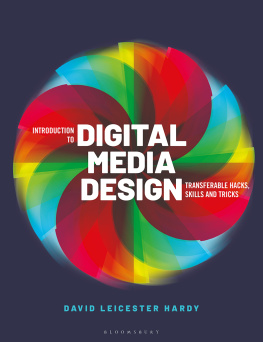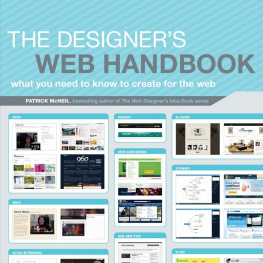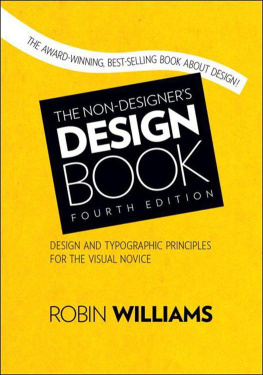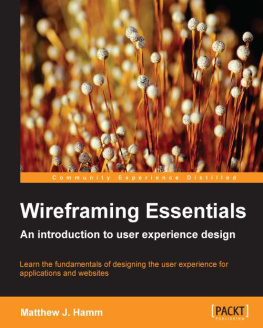Key Ideas
Lesson 1:
What is UX?
The best place to start any education is at the beginning.
Everything has a user experience. Your job is not to create the user experience. Your job is to make it good.
And what do I mean by good user experience?
It is common to think that a good user experience is one that makes users happy.
Not true!
If happiness was your only goal, you could just throw in some Lolcats and random compliments and go home. But although thats not the worst universe I can imagine your boss may not be satisfied with the results.
The goal of a UX designer is to make users effective.
A users experience is just the tip of the iceberg:
Many people mistakenly think that UX means a users experience, but it is actually about doing the process of User Experience Design.
A users individual experience is their conscious, subjective opinion of your app or site. User feedback is important sometimes but UX designers need to do a lot more than that.
Doing UX:
UX Design, (also sometimes called UXD), involves a process very similar to doing science: you do research to understand the users, you develop ideas to solve the users needs and the needs of the business and you build and measure those solutions in the real world to see if they work.
You will learn about all of that in this book. Or if thats not your deal, Lolcats are still an option.
Lesson 2:
The 5 Main Ingredients of UX:
User Experience design is a process, and these lessons roughly follow that process, but you should always keep these five things in mind: Psychology, Usability, Design, Copywriting, and Analysis.
Any one of these 5 ingredients could be a book of its own, so I will be oversimplifying a bit. This is supposed to be a crash course, not Wikipedia.
Although, to be fair, Im pretty sure Wikipedias UX page was written by a guy who heard about UX once... at that thing... that time...
1) Psychology
A users mind is complex. You should know; you have one, (I assume). UXers work with subjective thoughts & feelings a lot; they can make or break your results. And the designer must ignore their own psychology sometimes too, and thats hard!
Ask yourself:
What is the users motivation to be here in the first place?
How does this make them feel?
How much work does the user have to do to get what they want?
What habits are created if they do this over and over?
What do they expect when they click this?
Are you assuming they know something that they havent learned yet?
Is this something they want to do again? Why? How often?
Are you thinking of the users wants and needs, or your own?
How are you rewarding good behaviour?
2) Usability
If user psychology is mostly subconscious, usability is mostly conscious. You know when something is confusing. There are cases where it is more fun if something is hard like a game but for everything else, we want it to be so easy that even a Miss Teen USA contestant could use it.
Ask yourself:
Could you get the job done with less input from the user?
Are there any user mistakes you could prevent? (Hint: Yes, there are.)
Are you being clear and direct, or is this a little too clever?
Is it easy to find (good), hard to miss (better), or subconsciously expected (best)?
Are you working with the users assumptions, or against them?
Have you provided everything the user needs to know?
Could you solve this just as well by doing something more common?
Are you basing your decisions on your own logic or categories, or the users intuition? How do you know?
If the user doesnt read the fine print, does it still work/make sense?
3) Design
As the UX designer, your definition of design will be much less artistic than a lot of designers. Whether you like it is irrelevant. In UX, design is how it works, and its something you can prove; its not a matter of style.
Ask yourself:
Do users think it looks good? Do they trust it immediately?
Does it communicate the purpose and function without words?
Does it represent the brand? Does it all feel like the same site?
Does the design lead the users eyes to the right places? How do you know?
Do the colours, shapes, and typography help people find what they want and improve usability of the details?
Do clickable things look different than non-clickable things?
4) Copywriting
There is a huge difference between writing brand copy (text) and writing UX copy. Brand copy supports the image and values of the company. UX copy gets shit done as directly and simply as possible.
Ask yourself:
Does it sound confident and tell the user what to do?
Does it motivate the user to complete their goal? Is that what we want?
Is the biggest text the most important text? Why not?
Does it inform the user or does it assume that they already understand?
Does it reduce anxiety?
Is it clear, direct, simple, and functional?
5) Analysis
In my opinion, most designers weak spot is analysis. But we can fix that! Analysis is the main thing that separates UX from other types of design, and it makes you extremely valuable. It literally pays to be good at it.
So, ask yourself:
Are you using data to prove that you are right, or to learn the truth?
Are you looking for subjective opinions or objective facts?
Have you collected information that can give you those types of answers?
Do you know why users do that, or are you interpreting their behaviour?
Are you looking at absolute numbers, or relative improvements?
How will you measure this? Are you measuring the right things?
Are you looking for bad results too? Why not?
How can you use this analysis to make improvements?
Lesson 3:
Your Perspective
In User Experience design, the way you look at a problem can make or break your work. Your own desires and experience can even work against the users.
Know Thyself.
There are two things you need to be aware of, about yourself, before you can start understanding users well:
1) You want things that dont matter to users.
2) You know things that dont matter to users.
Meditate on that for a minute.
Namast.
****
Empathy: Want what they want.
If there is one word that is over-sold in UX, its empathy .
It is important though. It is. In general, and in UX.
But heres a secret: unless you are a serial killer, you have empathy. If you are a serial killer, UX design may not be for you.
What we want by nature may not be what the users want. And thats a big deal. It means your intuition about the users might be wrong!
Do research. Talk to users. Study the data. Cuddle some puppies.
When you truly understand a problem, it becomes your problem, emotionally. Thats empathy. You will feel it. A good solution will excite you. Not because youre an emotional superhero, but because you relate to the users.
Youre one of them now.
*single tear*
Ask yourself:







